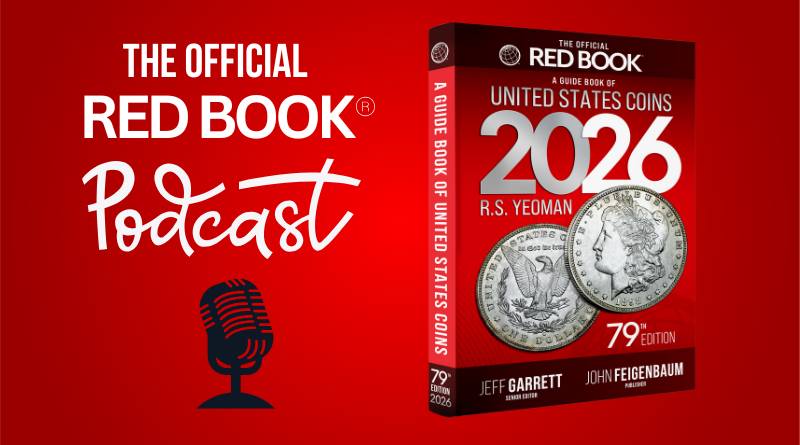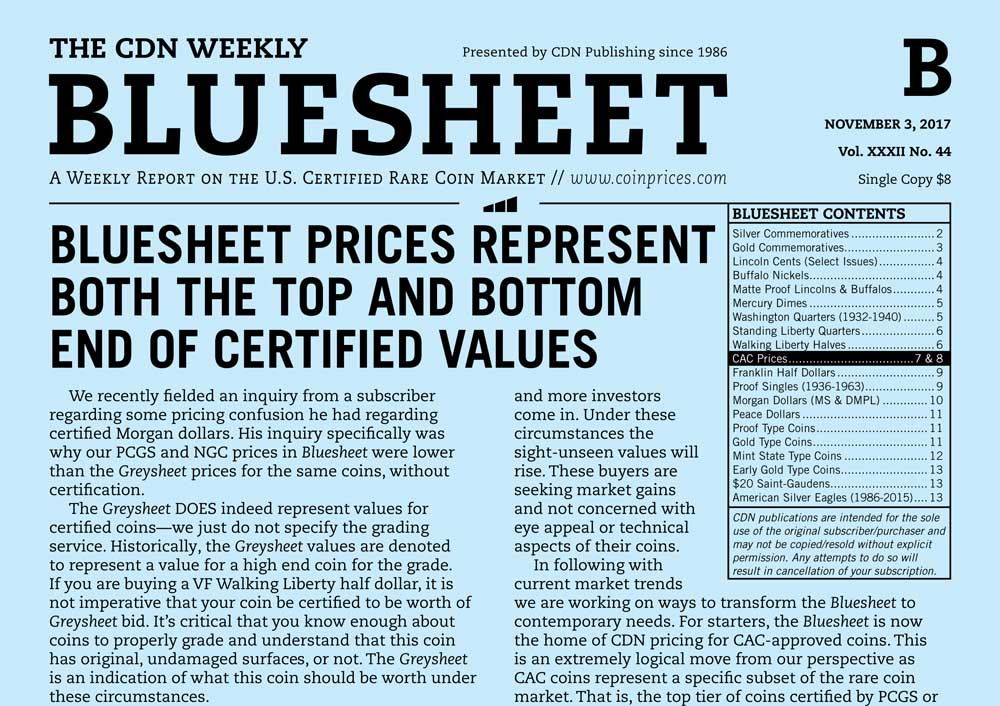BLUESHEET: BLUESHEET PRICES REPRESENT BOTH THE TOP AND BOTTOM END OF CERTIFIED VALUES
The Bluesheet, introduced in 1986 with the advent of third party grading, was intended to show buyers the “sight unseen” value for PCGS and NGC certified coins of popularly-traded series.
We recently fielded an inquiry from a subscriber regarding some pricing confusion he had regarding certified Morgan dollars. His inquiry specifically was why our PCGS and NGC prices in Bluesheet were lower than the Greysheet prices for the same coins, without certification.
The Greysheet DOES indeed represent values for certified coins—we just do not specify the grading service. Historically, the Greysheet values are denoted to represent a value for a high end coin for the grade. If you are buying a VF Walking Liberty half dollar, it is not imperative that your coin be certified to be worth of Greysheet bid. It’s critical that you know enough about coins to properly grade and understand that this coin has original, undamaged surfaces, or not. The Greysheet is an indication of what this coin should be worth under these circumstances.
The Bluesheet, introduced in 1986 with the advent of third party grading, was intended to show buyers the “sight unseen” value for PCGS and NGC certified coins of popularly-traded series. The basic idea was that the rare coin market would become commoditized and slabbed coins could be traded unseen between buyers and the Bluesheet would represent this value. In other words, more of a “trader’s sheet” than a collector’s guide.
Over the ensuing decades, the rare coin market has vacillated between these two worlds. Are we an investor market or a collector market? There is no absolute answer but currently we are undeniably far more of a collector-based market. When prices rise, we see more articles written in non-numismatic publications, and more investors come in. Under these circumstances the sight-unseen values will rise. These buyers are seeking market gains and not concerned with eye appeal or technical aspects of their coins.
In following with current market trends we are working on ways to transform the Bluesheet to contemporary needs. For starters, the Bluesheet is now the home of CDN pricing for CAC-approved coins. This is an extremely logical move from our perspective as CAC coins represent a specific subset of the rare coin market. That is, the top tier of coins certified by PCGS or NGC in a specific grade. (You can learn more about CAC’s philosophy at www.caccoins.com)
* * *
Circling back to our reader’s initial question, the Bluesheet value for a PCGS and NGC coin specifically reference a basal value for “any” coin in that particular holder. The Greysheet value for the same coin represents a representative value for a nice, above-average example for the coin, and CAC pricing reflects a valuation for that coin if it has been approved by them, and their strict standards.
The rare coin market is complex to say the least, and collectors should seek advice from a trusted dealer when buying.

Download the Greysheet app for access to pricing, news, events and your subscriptions.
Subscribe Now.

Subscribe to The Greysheet for the industry's most respected pricing and to read more articles just like this.
Author: John Feigenbaum
Related Stories (powered by Greysheet News)
View all news
Special Whitman Expo Edition in Baltimore, Maryland

BONUS FEATURE: Jeff, John, and Ted predict year-end gold and silver prices.

State of the Market: A (Possibly Too-Early) Early Read









Please sign in or register to leave a comment.
Your identity will be restricted to first name/last initial, or a user ID you create.
Comment
Comments